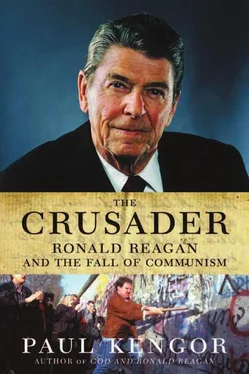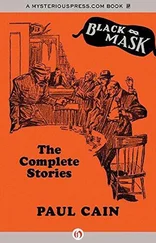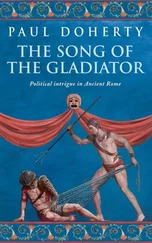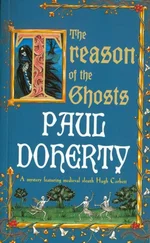38. “Reagan Joke Echoes ‘Crusade’ Against Socialism,” Sofia BTA, August 17, 1984, published in FBIS, Eastern Europe, August 20, 1984, C1; and Yoan Mateev, “The Mistake,” Sofia Rabotnichesko Deo, August 18, 1984, published as “Reagan Joke Termed Technical, Political Mistake,” FBIS, Eastern Europe, August 22, 1984, C1.
39. Genrikh Borovik, Moscow Television Service, August 31, 1984, transcript published as “Parallels Between Reagan, Hitler Policies Posed,” in FBIS-4-SEP-84, September 4, 1984, DD4–5.
40. Reagan, “Remarks at a White House Luncheon Marking the 40th Anniversary of the Warsaw Uprising,” August 17, 1984.
41. Moscow TASS International Service, September 10, 1984, published as “Reagan Again Questions Yalta Conference Decisions,” in FBIS, FBIS-SOV-11-SEP-84, September 11, 1984, A4. 42. Valentin Zorin speaking on Moscow TV’s “The World Today” program, September 7, 1984. Text is published as “U.S. Attempts to Destabilize USSR Backfire,” in FBIS, FBIS-SOV11-SEP-84, September 11, 1984, A3–4.
43. Andrei Gromyko, Memoirs (New York: Doubleday, 1989), 307.
44. Both letters are contained in a folder at the Reagan Library. See: PHF, PR, RRL, Box 10, Folder 147.
socioeconomic development is also caused by serious external factors,” said Gorbachev, who thus pledged to hike Soviet defense spending in order to try to meet the heightened Reagan levels. He embarked on a new economic restructuring (perestroika) in part to provide the resources to handle that spending and to generally improve the Soviet economy. See Marc Landy and Sidney M. Milkis, Presidential Greatness (Lawrence, University Press of Kansas, 2000), 226; Vladimir Kontorovich, “The Economic Fallacy,” The National Interest, Spring 1993, 44; and Russell Bova in Ellman and Kontorovich, eds., The Disintegration of the Soviet Economic System, 19, 43. 18. Gaddis, The United States and the End of the Cold War, 225n.
19. Leebaert, The Fifty-Year Wound, 512.
20. Morris interviewed on “Reagan,” The American Experience, PBS.
21. Grinevsky speaking on May 8, 1998 at Brown University symposium, “Understanding the End of the Cold War.”
22. Schweizer, Reagan’s War, 241–45.
23. Gromyko said this to former U.S. Senator George McGovern. See Oberdorfer, The Turn, 89.
24. Ibid., 245.
25. Schweizer, Victory, 198. On Zaslavsky, see David Remnick, Lenin’s Tomb (New York: Random House, 1994), 320–23.
26. Quoted in Schweizer, Victory, 198.
27. Falin said this in an interview with Marina Kalashnikova of Vlast magazine, published on the June 9, 2005 Web site of Kommersant (one of Russia’s independent newspapers) under the headline, “Reagan Provoked Us to Slam the Door.”
28. One visitor to Russia reported this display to me in 1999. Another Soviet who talks of Reagan’s influence on the environment that created Gorbachev is Major-General Vladimir Slipchenko, a well-known Soviet academician who holds two doctorates, and worked in the central headquarters of the Soviet Ministry of Defense in the early 1980s. He spent much of his time traveling to Warsaw Pact countries visiting military institutions. In these countries, he said there was a consensus that the military burden had become “intolerable.” As a result, said Slipchenko, “A Gorbachev had to appear in the Soviet Union. If it was not Gorbachev, it could have been any other person.” Slipchenko speaking on May 8, 1998 at Brown University symposium, “Understanding the End of the Cold War.”
29. All of these difficulties in measuring Gorbachev’s sincere thinking are present when reading Perestroika. He produced it just two years after coming to power, at the height of the global excitement over perestroika. The book provides a clear delineation of the disparities between Gorbachev and Reagan. At the same time, it must also be read carefully with an understanding of the above caveats. I suggest reading it in tandem with Archie Brown’s The Gorbachev Factor, or perhaps reading Brown first.
30. Mikhail Gorbachev, Perestroika (New York: Harper & Row, 1987), 24, 58, 62, 64, 161, 252–54.
31. Ibid., 128–30.
32. Ibid., 220.
33. Ibid., 66, 220.
34. Also see, among others: Ellman and Kontorovich, eds., The Disintegration of the Soviet Economic System, 20–27.
35. Gorbachev, Perestroika, 41, 106, 146.
36. In January 1987, the Party Plenum made official this thinking by formally defining perestroika. “The main idea of our strategy,” declared the Party Plenum, “is to unite the achievements of the scientific-technical revolution with a planned economy and to bring into action the entire potential of socialism.”
37. The “potential of socialism” (note: Gorbachev used the word “socialism” interchangeably with “communism”), wrote Gorbachev, “had been underutilized. We realize this particularly clearly now in the days of the seventieth anniversary of our Revolution. We have a sound material foundation, a wealth of experience and a broad world outlook with which to perfect our society.”
38. Gorbachev added: “The classics of Marxism-Leninism left us with a definition of the essential characteristics of socialism. They did not give us a detailed picture of socialism. They spoke of its theoretically predictable stages. It is our job to show what the present stage should be like.” That next stage, perestroika, “revives” the “living spirit of Leninism,” wrote Gorbachev.
39. Gorbachev, Perestroika, 10, 11, 17, 35, 45, 50, 66, 151, 253.
40. Ibid., 50.
41. Archie Brown also says, and this would at least partly explain Gorbachev’s Leninist language in Perestroika in 1987, that “Until the [Soviet] system had been radically altered by the late 1980s,…most ideas for changing that system fundamentally had, indeed, to be presented as a return to Leninist first principles if they were to get off the ground in the real world of Soviet politics.” Brown says that a “failure to appreciate” this has “led a number of Western authors wildly astray in their analysis of Gorbachev’s speeches and public statements” and “public utterances.”
In other words, Gorbachev had to cloak his actions in Leninist language. At the same time, as Brown himself notes, Gorbachev was a Leninist and long retained an “idealized” view of Lenin. Ultimately, he moved away from that idealized view, but certainly not totally. In short, the answer is much more complicated. The full picture is complex and requires nuance. Brown adds that Gorbachev, being CPSU chief, was thus also “official guardian of Marxist-Leninist holy writ,” and, further then, “as leader of a reform movement ready to question much of that doctrine, was in the uncomfortable position of being simultaneously both Pope and Luther.”
Furthermore, Brown concedes that Gorbachev, like the vast majority of Soviet citizens, had an “idealized” view of Lenin, a consequence of seventy years of distortion and brainwashing. Brown, The Gorbachev Factor, 93.
42. Gorbachev, Perestroika, 25.
43. Gorbachev, Perestroika, 25, 45, 145.
44. Ibid., 145. Obviously, it is arrant nonsense to say that Vladimir Lenin rejected violence. No government in history, with the possible exception of Red China, which had many more victims at its disposal, killed as many innocents as the Soviet state that Lenin created. The killing spree began not under Joseph Stalin but by direct orders from Lenin, the man who instituted the gulag labor-camp system where tens of millions perished. Lenin established the secret police, first called the Cheka. Right after the October 1917 revolution, by 1918–19, the Cheka was averaging 1,000 executions per month for political offenses alone, without trial. See Alexander Solzhenitsyn, Alexander Solzhenitsyn Speaks to the West (London: The Bodley Head, 1978), 17. This number was proudly self-reported by the Cheka in its documents. The Cheka actually apologized that its data was incomplete, and boasted that the number was likely much higher.
Читать дальше












